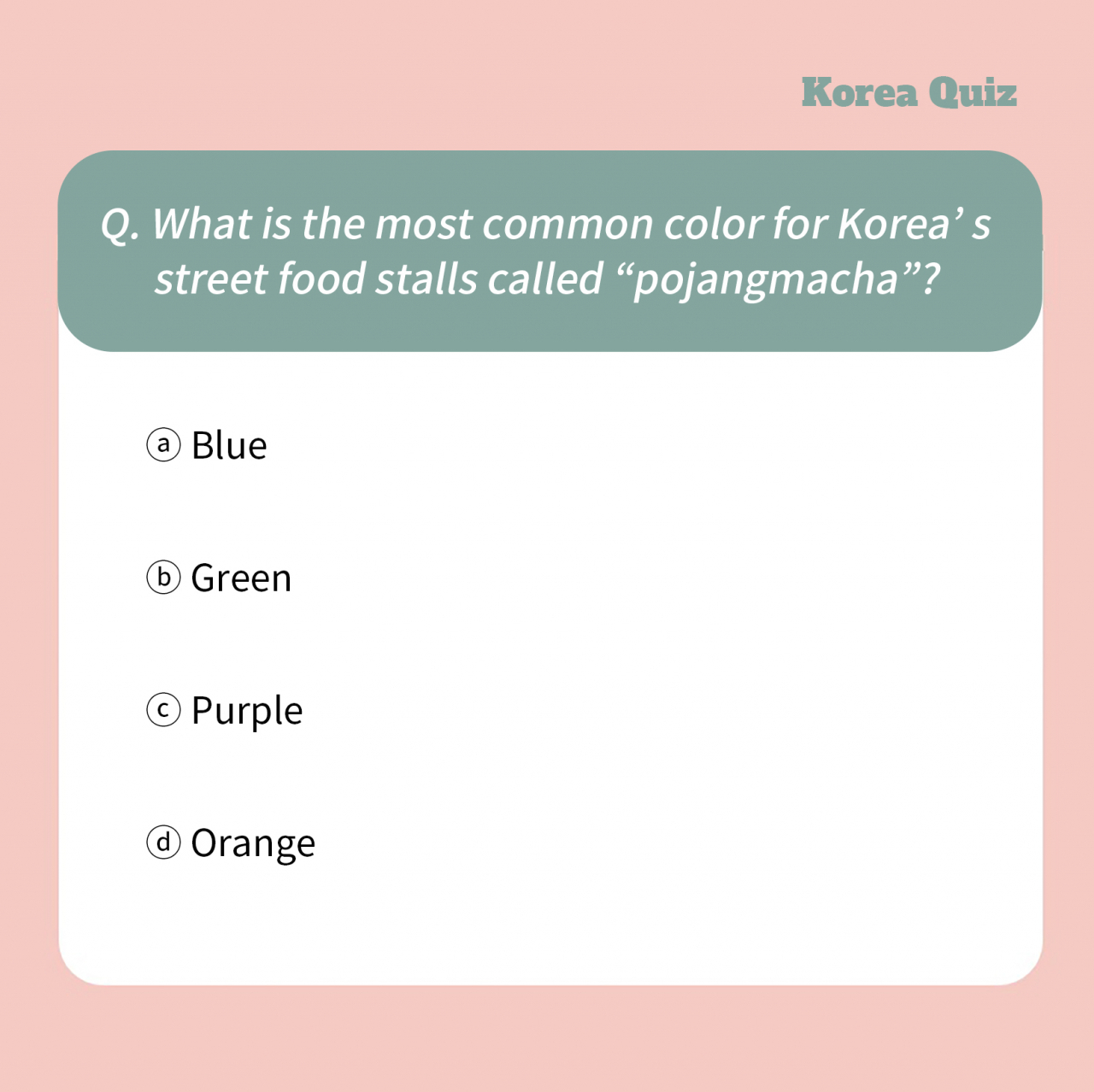

Find the answer at the bottom.
In many Korean dramas, the protagonist sits inside an orange tent called a "pojangmacha," drinking soju with a concerned friend or love interest. This is why for fans of Korean dramas, pojangmacha -- which means "covered wagon" in Korean -- are indeed a familiar trope.
These street food stalls, serving comfort food and drinks, have been a beloved tradition for generations. Menus feature dishes like tteokbokki (spicy rice cakes), janchiguksu (noodles) and dakbal (chicken feet), often paired with soju, a popular distilled grain liquor.
Orange has become the most popular choice for pojangmacha due to its bright, eye-catching appeal. The color is also known for supposedly increasing people's appetites.
However, pojangmacha come in other colors as well. For instance, Busan's Nampo-dong is known for having blue pojangmacha. According to pojangmacha owners in Busan, blue is used to symbolize the fresh seafood dishes they sell.
The exact origins of pojangmacha remain unclear, but many trace them back to street vendors of the 1950s and 1960s. These vendors sold soju and snacks -- such as grilled sparrows -- out of mobile stalls.
Pojangmacha grew in both their number and menu offerings in tandem with the country's economic development in subsequent decades.
They became a haven for office workers to unwind after work.
Jongno 3-ga Pojangmacha Street in Seoul is a famous spot where orange pojangmacha are still abundant these days.
The 200-meter stretch between exits 5 and 6 of Jongno 3-ga Station undergoes a nightly transformation. By day, it's relatively calm, but after dark, it becomes a lively area teeming with orange pojangmacha.
Many pojangmacha are not registered, so they may lack a business license, tax compliance and food safety supervision, which is why they often don't accept credit cards.
Answer: (d)







